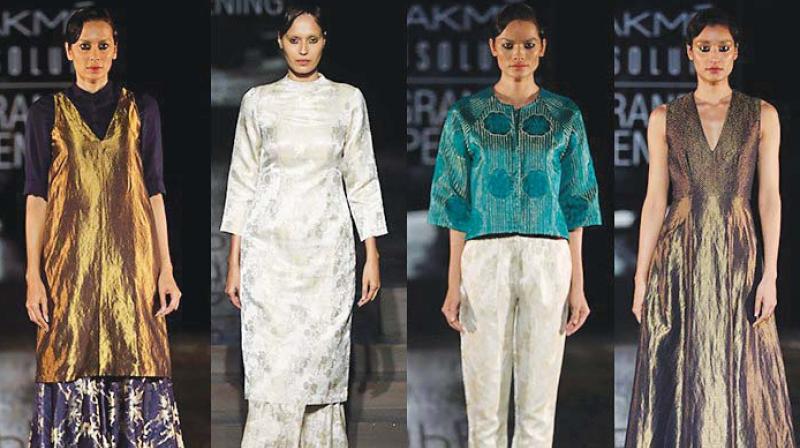Size-up on desi designs

In a market full of international sizes, finding the right fit is most challenging for the average Indian consumer. However, Smriti Irani seems to have found a solution to this dilemma. Launching the ‘Size India’ project during the Textile Conclave at the Vibrant Gujarat Summit, the Union textiles minister announced that the Indian garment industry would soon get a country-specific apparel size.
The announcement has been welcomed by the Indian design fraternity. The indigenisation of sizes would bolster the growth of the Indian fashion market, and it is also high time we officially got our measurements in place.
Smriti Irani pointed out that in the apparel export segment, one of the biggest challenges was that the prevailing UK, US, and European size charts didn’t suit Indian sizes. It is another matter that India as a huge country, with different body sizes, would require an extensive size-chart catering to all regions.
In concurrence, veteran designer, Ritu Kumar says, “The project may be a good idea for the India fashion fraternity. Yes, Indian specifications and measurements are certainly different and we need charts which may even have to give different specifications for different parts of the country.”
Most designers feel this is a good move as this conversion of sizes created confusion, but they also wish that the existing standards of measurements in looms should be changed.
Senior designer Rina Dhaka explains, “We usually take clients’ measurements according to the US or UK size and covert them to the Indian scale before creating garments. For online buyers and the NRI audience, a well-developed system for measurement in Indian wear would be a great move because it will reduce alterations and returns.”
Pointing out that most Indian women have narrow shoulders and bigger hips, making for a pear body type, she explains, “Then there is the apple body type and the ruler category for straight bodies. Sometimes altering the garment is as costly as creating a new one, so I hope they consider all these factors while charting out a new size system. I also feel the standard sari size in looms should be changed because right now it’s made as a free size that is worn by all. Ideally, smaller women do not need 6 yards of fabric.”
Designer Jenjum Gadi’s concern on the other hand, is that while size charts are being created for Indian buyers, the North East sizes shouldn’t be left out, “In India, different regions have different body types so it will be a big task. While North Indian and South Indian body types are very different, one has to keep in mind that the people from North East states wouldn’t fit either of the two.” Designer Charu Parashar also reasons, “For designers who wish to expand their business overseas, domestically or online, this would make things easy. From the UK, US, Europe to China, Korea, and Japan, there are many countries that follow their own size system. In US sizes, there are a number of variations – from zero to 16 which includes extra small to extra large; similarly, for India, we will need an elaborate chart system.”
Not just local designers, but even the Indian retail industry welcomes the move. Poornima Vardhan, founder of luxury brand 335TH says, “With India’s domestic apparel market size expected to grow at 11-12 percent CAGR and reach about $160 billion by 2025, the Indian standard size will help designers especially in the digital economy. Currently, India follows the UK body measurements. However, the Indian body type is vastly different from the UK standard. Indians are petite and shorter. Thus, the Indian standard size, if implemented accurately, will not only help designers across the world to customise better fits but also help local designers to access Indians globally.”

